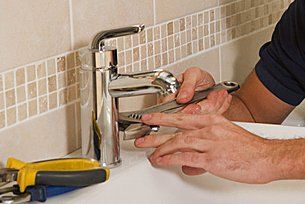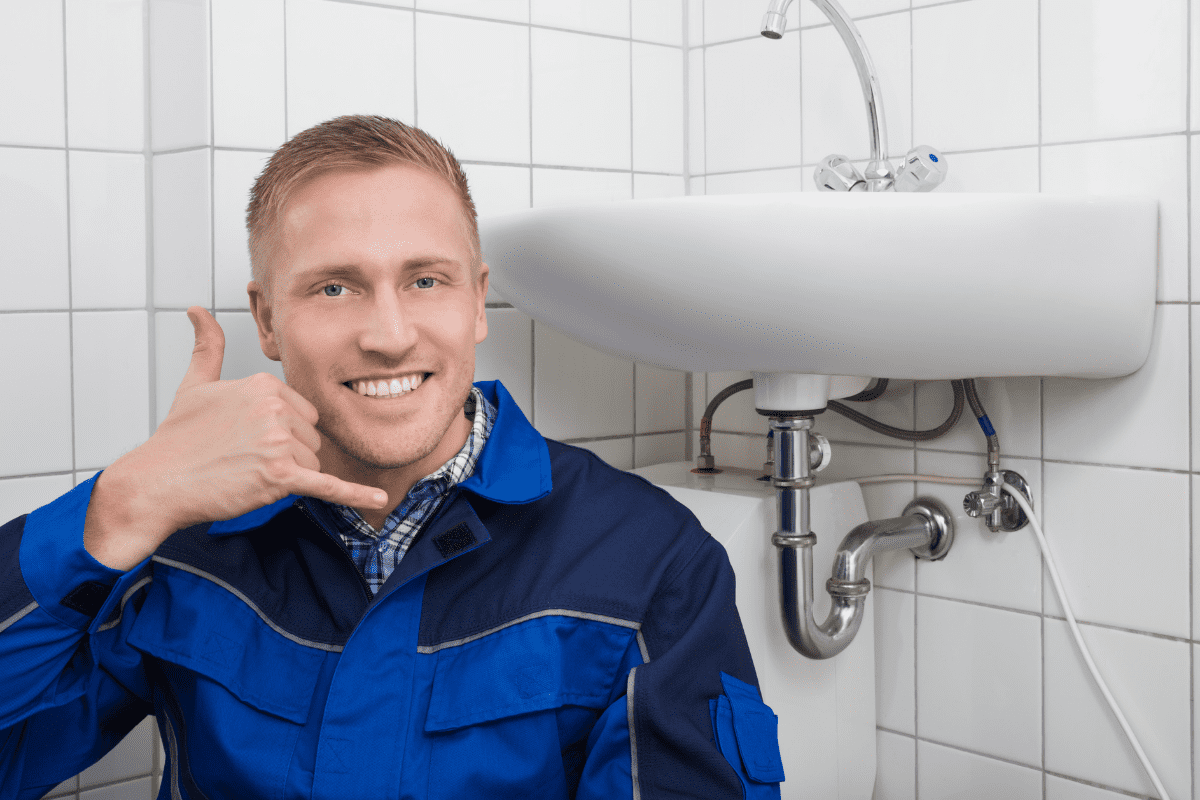The of Plumbing: Upcoming Developments and Advancements
The of Plumbing: Upcoming Developments and Advancements
Blog Article
Almost everyone has their unique conception about Innovative Plumbing Trends Transforming Construction.

Intro
The pipes industry is undergoing a transformative stage driven by technological improvements and expanding worries for sustainability and effectiveness. This short article checks out emerging trends and advancements shaping the future of pipes.
Regulative Landscape
Governing structures play a crucial function in shaping the fostering of plumbing developments, with standards and codes controling everything from water performance to item safety and security. As technologies remain to advance, regulatory bodies should adjust to make certain consumer defense and environmental stewardship.
Future Outlook
The future of plumbing is characterized by continued technology and combination with other industries such as IoT, renewable energy, and structure automation. By welcoming sustainable practices, leveraging emerging modern technologies, and prioritizing user-centric design, the plumbing market is positioned to resolve the evolving requirements of culture while reducing its ecological footprint.
Enhanced Reality in Pipes
Increased Truth (AR) modern technology is revolutionizing pipes by giving service technicians with real-time aesthetic guidance for troubleshooting and fixing jobs. AR-enabled clever glasses or mobile applications overlay digital information onto the physical setting, assisting plumbers picture pipeline formats, determine hidden leakages, and perform repair services with precision.
Effect of 3D Printing
The development of 3D printing has actually presented new opportunities in producing plumbing elements. From custom-made fixtures to detailed pipeline fittings, 3D printing enables rapid prototyping and on-demand manufacturing, minimizing preparations and allowing greater personalization in plumbing layout.
Health And Wellness Qualities
In action to enhanced issues for health and wellness, pipes components are integrating functions such as antimicrobial surfaces, touchless procedure, and self-cleaning devices. These developments not just enhance health yet also promote user convenience and benefit.
Hygiene-focused Fixtures
Touchless taps, self-sanitizing toilets, and antimicrobial surfaces are becoming progressively common in domestic and industrial setups, lessening the danger of bacterium transmission and advertising a cleaner, much healthier atmosphere.
Water Quality Tracking
Advancements in water high quality monitoring innovations enable property owners to keep an eye on the pureness and safety and security of their water supply in real-time. Smart water quality sensing units can detect pollutants, pH degrees, and temperature level variants, empowering customers to take aggressive actions to guarantee water safety.
Remote Pipes Services
Remote diagnostics and online assistance are revolutionizing the way pipes services are supplied. With video clip conferencing and remote access technologies, plumbings can repair issues, provide advice for DIY fixings, and even do remote inspections, using better ease of access and ease to home owners.
Difficulties and Opportunities
While plumbing technologies hold tremendous guarantee, they additionally present challenges such as information privacy issues, regulatory conformity, and the requirement for workforce training. Addressing these difficulties calls for partnership in between industry stakeholders and regulatory bodies to guarantee secure and responsible implementation of new innovations.
Smart Pipes Equipments
Integrating wise innovation right into plumbing systems allows remote tracking, leak detection, and automated upkeep. Smart sensors and IoT (Web of Points) devices enable property owners and plumbers to monitor water use and identify issues in real-time, bring about a lot more reliable source monitoring and positive maintenance.
Water Performance Solutions
With increasing focus on water preservation, cutting-edge remedies are being developed to reduce water wastage in plumbing systems. High-efficiency components, greywater recycling systems, and wise irrigation controllers are amongst the innovations aiding consumers decrease their water footprint while keeping convenience and ease.
Lasting Products
The shift in the direction of sustainability extends to plumbing products, with an expanding preference for environmentally friendly choices. Biodegradable piping materials, such as PEX (cross-linked polyethylene) and HDPE (high-density polyethylene), deal durability and resistance to deterioration without jeopardizing ecological stability.
Predictive Upkeep
Anticipating upkeep techniques take advantage of data analytics and artificial intelligence algorithms to expect and prevent pipes issues prior to they occur. By evaluating historic information and efficiency metrics, predictive upkeep formulas can recognize patterns and anomalies, allowing positive interventions to avoid pricey repair services and disruptions.
Final thought
To conclude, the future of plumbing is specified by a merging of technology, sustainability, and user-centric layout. By embracing smart solutions, lasting products, and proactive upkeep methods, the pipes market can improve performance, advertise safety, and add to an extra sustainable future.
Plumbing Industry Trends You Need To Know
Smart technology in plumbing
Homeowners want to be able to manage their homes from their phones. The technology exists to make that happen. From smart toilets to leak detector devices, the whole plumbing system can be managed on an interconnected network made up of sensors, IoT devices, and machine learning algorithms.
This allows for wireless control to turn appliances on and off, automate routines, and access advanced monitoring to track water usage and flag potential issues. Smart technology streamlines water consumption, maintenance and energy usage, creating a more efficient system.
Green plumbing
The data analysis possible with smart technology not only improves convenience and cost-effectiveness but also fulfills a high-priority customer desire – sustainability. Consumers are very aware of their impact on the planet and want plumbing solutions to reduce damage and support sustainability. Eco-friendly plumbing solutions are already starting to emerge.
Customers can opt for low-flow toilets, water-saving faucets, and connections to sustainable energy sources. Beyond monitoring water consumption, customers can conserve water through the installation of greywater systems. This is a system that collects water that has been used but is still clean enough for some household uses such as toilet flushing.
Shorter product pipeline
To keep up with modern plumbing, plumbers need modern tools that enable them to complete jobs more efficiently. One technology making strides in this area is 3D printing. By 3D printing key plumbing fixtures, plumbers can reduce wait times even for specialized fixtures. It minimizes delays often seen in traditional manufacturing that frustrate customers and prevent plumbers from taking on more work.
Off-site repairs
Augmented reality is making a splash in many industries including plumbing. Plumbers can map a building online so they can explore the plumbing system through augmented reality, identifying areas of maintenance and repair completely digitally. This technology can be applied quite widely in plumbers’ work including planning installations and training new recruits. It’s safer, smarter and more efficient.
Low-footprint materials
Another way for plumbing companies to reduce their environmental footprint and meet the customer demand for sustainability is by using recycled materials in their work. The products they source and manufacture such as pipes, fixtures and faucets can be made from recycled materials. This saves the planet while being just as effective.
Onsite water purification
Additionally, plumbing companies can be advocates of water conservation and ease the financial and environmental concerns of customers by offering water purification systems. New water purification technology such as reverse osmosis systems and UV systems make it possible for homeowners and business owners to thoroughly cleanse water, removing contaminants onsite. This means the water can be safely reused in more ways than greywater can be, establishing a water recycling loop.
Tankless water heaters
Another innovation of modern plumbing is tankless water heaters. The idea is that the water is heated on demand as it runs through the system instead of being heated in a water tank. This is more energy efficient and therefore cost-effective and eco-friendly because water isn’t heated needlessly.

I'm certainly very enthusiastic about and I am assuming you liked our blog post. Don't hesitate to take the time to share this page if you liked it. I thank you for your readership.
Call Us Today Report this page